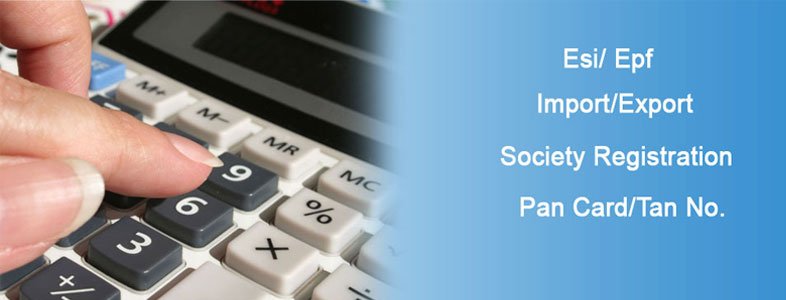Epf /Esi Returns

EPF (Employees' Provident Fund) and ESI (Employees' State Insurance) returns are periodic filings required by employers to comply with statutory regulations related to employee benefits in many countries. These returns ensure that contributions to employee welfare schemes are properly reported and remitted.
EPF Returns
EPF (Employees' Provident Fund) is a social security scheme that provides financial security to employees through contributions made by both the employee and employer. The EPF return involves reporting contributions and ensuring compliance with EPF regulations.
Key Aspects of EPF Returns:
-
Purpose of EPF Returns:
- Report contributions made by both employer and employee to the EPF account.
- Ensure compliance with EPF regulations and timely remittance of contributions.
- Provide accurate records for employee benefits and future claims.
-
Types of EPF Returns:
- EPF Monthly Return: Detailed report of monthly contributions, including employee and employer contributions, and other relevant details.
- EPF Annual Return: Summary of all EPF transactions for the financial year.
-
Filing Deadlines:
- Monthly Returns: Typically due by the 15th of the following month.
- Annual Returns: Filed at the end of the financial year, as per specific regulations.
-
Components of EPF Returns:
- Employee Details: Information about employees contributing to the EPF.
- Contribution Details: Total contributions made by employees and employers.
- Interest and Withdrawals: Any interest accrued and withdrawals made during the reporting period.
-
Filing Process:
- Prepare Data: Gather details on employee contributions and employer contributions.
- Complete Forms: Fill out the required EPF return forms.
- Submit Online: File the returns electronically through the EPF portal or authorized channels.
- Remit Contributions: Ensure timely payment of EPF contributions to the EPF authority.
-
Common Challenges:
- Data Accuracy: Ensuring accurate reporting of contributions and employee details.
- Timeliness: Meeting filing and payment deadlines to avoid penalties.
- Compliance: Adhering to changing regulations and guidelines.
ESI Returns
ESI (Employees' State Insurance) is a social security scheme that provides medical, disability, and other benefits to employees. The ESI return involves reporting contributions and ensuring compliance with ESI regulations.
Key Aspects of ESI Returns:
-
Purpose of ESI Returns:
- Report contributions made by both employer and employee to the ESI scheme.
- Ensure compliance with ESI regulations and timely remittance of contributions.
- Provide accurate records for employee benefits and claims.
-
Types of ESI Returns:
- ESI Monthly Return: Detailed report of monthly contributions, including employee and employer contributions.
- ESI Half-Yearly Return: Summary of contributions and details for a half-year period.
-
Filing Deadlines:
- Monthly Returns: Typically due by the 15th of the following month.
- Half-Yearly Returns: Filed at the end of each half-year period.
-
Components of ESI Returns:
- Employee Details: Information about employees covered under the ESI scheme.
- Contribution Details: Total contributions made by employees and employers.
- Claims and Benefits: Details of any claims made and benefits provided during the reporting period.
-
Filing Process:
- Prepare Data: Gather details on employee contributions and employer contributions.
- Complete Forms: Fill out the required ESI return forms.
- Submit Online: File the returns electronically through the ESI portal or authorized channels.
- Remit Contributions: Ensure timely payment of ESI contributions to the ESI authority.
-
Common Challenges:
- Data Accuracy: Ensuring accurate reporting of contributions and employee details.
- Timeliness: Meeting filing and payment deadlines to avoid penalties.
- Compliance: Adhering to changing regulations and guidelines.
General Tips for EPF/ESI Returns:
- Maintain Accurate Records: Keep detailed and up-to-date records of employee contributions and benefits.
- Use Automated Tools: Utilize payroll and compliance software to streamline data collection and reporting.
- Stay Informed: Keep up-to-date with changes in EPF and ESI regulations and filing requirements.
- Seek Professional Help: Consult with payroll or compliance professionals to ensure accuracy and compliance.
- Review Regularly: Regularly review and reconcile contributions and returns to avoid discrepancies.
Filing EPF/ESI Returns in Different Jurisdictions:
-
India:
- EPF: Managed by the Employees' Provident Fund Organisation (EPFO). Returns are filed via the EPFO portal.
- ESI: Managed by the Employees' State Insurance Corporation (ESIC). Returns are filed via the ESIC portal.
-
Other Countries:
- EPF: Different countries have their own provident fund schemes with specific reporting requirements.
- ESI: Other countries may have similar social security schemes with their own reporting processes.
If you have specific questions about EPF/ESI returns in a particular jurisdiction or need detailed guidance on the filing process, feel free to ask!